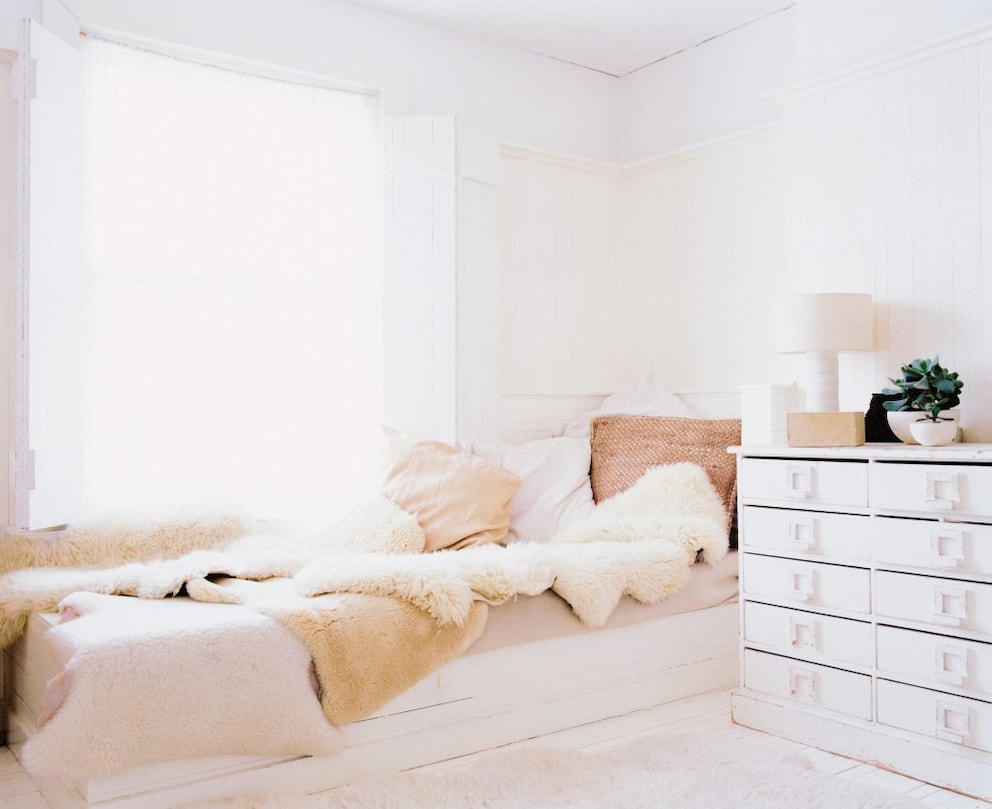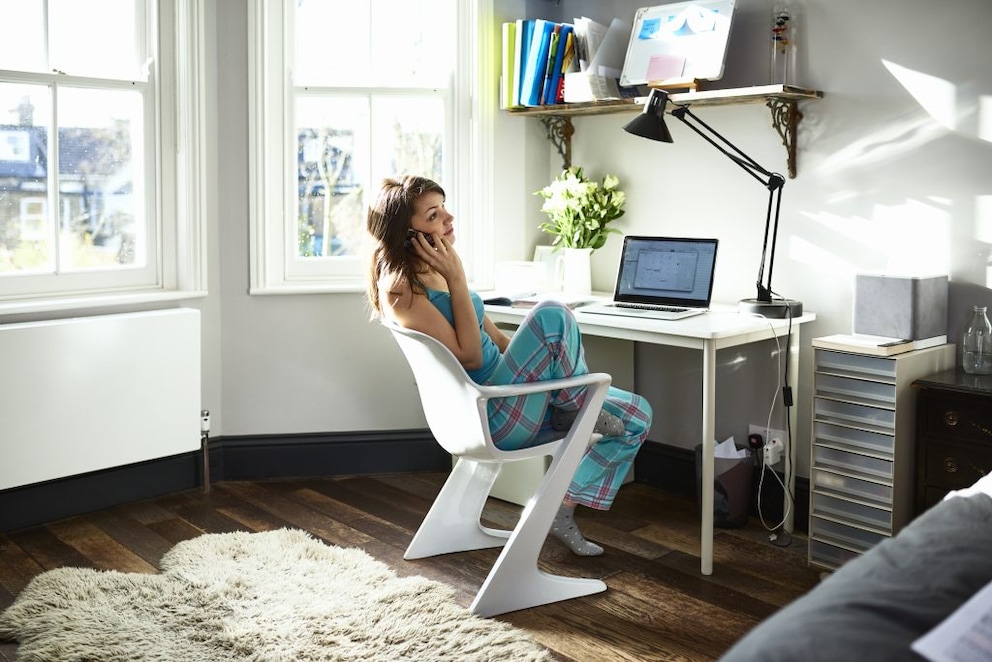April 25, 2023, 3:23 pm | Read time: 5 minutes
Once students have secured affordable housing, the next step is furnishing their new space. To make the most of the typically limited area, setting up a student apartment requires cost-effective and smart solutions.
Affordable housing has become a rare find for today’s students. Often, compromises must be made in furnishings to avoid further straining the already tight student budget. Since the kitchen, bedroom, living room, and study often have to be combined into one space, smart solutions are needed for furnishing a student apartment. Creative ideas are also required for a cozy living atmosphere. myHOMEBOOK author and interior designer Odett Schumann explains how to furnish a student apartment in a space- and cost-saving way.
1. Keep Walls Simple
Whether in a shared apartment, a studio, or a dormitory, student living spaces are almost always limited in size. Therefore, attention should be paid to their design even before furnishing the student apartment. This starts with the choice of wall color.

In cramped spaces that also need to accommodate a certain amount of furniture, light colors are best. For those who find plain white too stark, a coat of sand, light gray, or pastel is recommended. The good news: If wall surfaces are kept simple, more accents can be added with furniture and accessories.
2. Create a Structured Layout
In small spaces like a student apartment, a clear room layout is essential. Structure creates order; otherwise, it quickly becomes chaotic, which is not conducive to studying or relaxing. Room dividers help create clear lines, allowing the apartment to be divided into zones, but most importantly, functionally.
This doesn’t always have to be a screen purchased for this purpose; furniture can also be used multifunctionally. A bookshelf or wardrobe can visually separate the sleeping and working areas. Organizational systems and smart storage solutions, such as storage boxes, flat containers under the bed, and mobile furniture like rolling carts, are also helpful for more clarity and structure.
3. Use Practical Furniture

The right choice of furniture is a crucial factor when furnishing a student apartment. Typically, these spaces are no more than about 20 square meters, so affordable and smart furnishings are advisable: Ideally, the furnishings consist of space-saving multifunctional furniture.
Foldable models like a wall desk or a Murphy bed can be quickly stowed away after use. A sofa bed is also suitable, serving its purpose both day and night. Additionally, stools and chairs can double as side tables or even nightstands when needed.
Furniture that offers ample storage also creates more living space. This is especially true for wardrobes, desks, and beds. For maximum storage, the wardrobe should reach up to the ceiling, the workspace should have additional compartments, and the bed should have a spacious storage box.
4. Cohesive Design Influences Room Perception
To smartly furnish the typically limited living space of a student apartment, the right design can be crucial. Minimalist furniture, for example, exudes much more calm, structure, and clarity. Therefore, it’s worth avoiding too much experimentation with different materials and patterns on furniture surfaces. A certain level of monotony benefits small spaces and gives them a sense of greater size.
Just like mirrored surfaces: To avoid having too much furniture in the room, a wardrobe with a mirrored door is advisable. With all the closed surfaces, some open furniture is needed for visual balance, noticeably lightening the ambiance. This includes small wall or book shelves and a delicate desk consisting only of a tabletop on two trestles. A console table as a workspace also appears airy.
Also interesting: Furnishing Your First Apartment – Tips from an Interior Designer
5. Equip the Kitchen Smartly
Since living space and budget are generally limited, most student apartments have a scaled-down or even compromise kitchen solution. A full setup is often not feasible, but high ceilings, which can be well utilized, are common. Vertical storage keeps kitchen appliances, supplies, and extra cookware as space-efficient as possible.
Costs can also be saved with old kitchen furniture from grandma’s attic or the flea market. A small wall cabinet or display case is not only budget-friendly but also adds charm to the student pad. For work surfaces, a simple board from the hardware store can suffice.
Practical: Since work surfaces are scarce in student households, it’s useful to have a small hanging cabinet or a shelf that can double as a cutting board over the sink, providing extra space for chopping vegetables and more.

7 Tips to Make a Small Bedroom Feel Larger

5 Clever Ideas for More Space in Small Living Rooms

How to Set Up a Space-Saving Home Office–Maximize Every Inch
6. Be Sparing with Decorations

Of course, decoration should not be lacking in a student apartment. However, given the limited space, only a small selection of accessories is advisable. Students often travel abroad for internships or exchanges, frequently bringing back special mementos from their journeys. All that’s missing are a few items like flea market finds, such as table or bedside lamps, to complete the look.
Students often travel abroad for internships or exchanges, frequently bringing back special mementos from their journeys. All that’s missing are a few items like flea market finds, which can add charm to the student abode.

